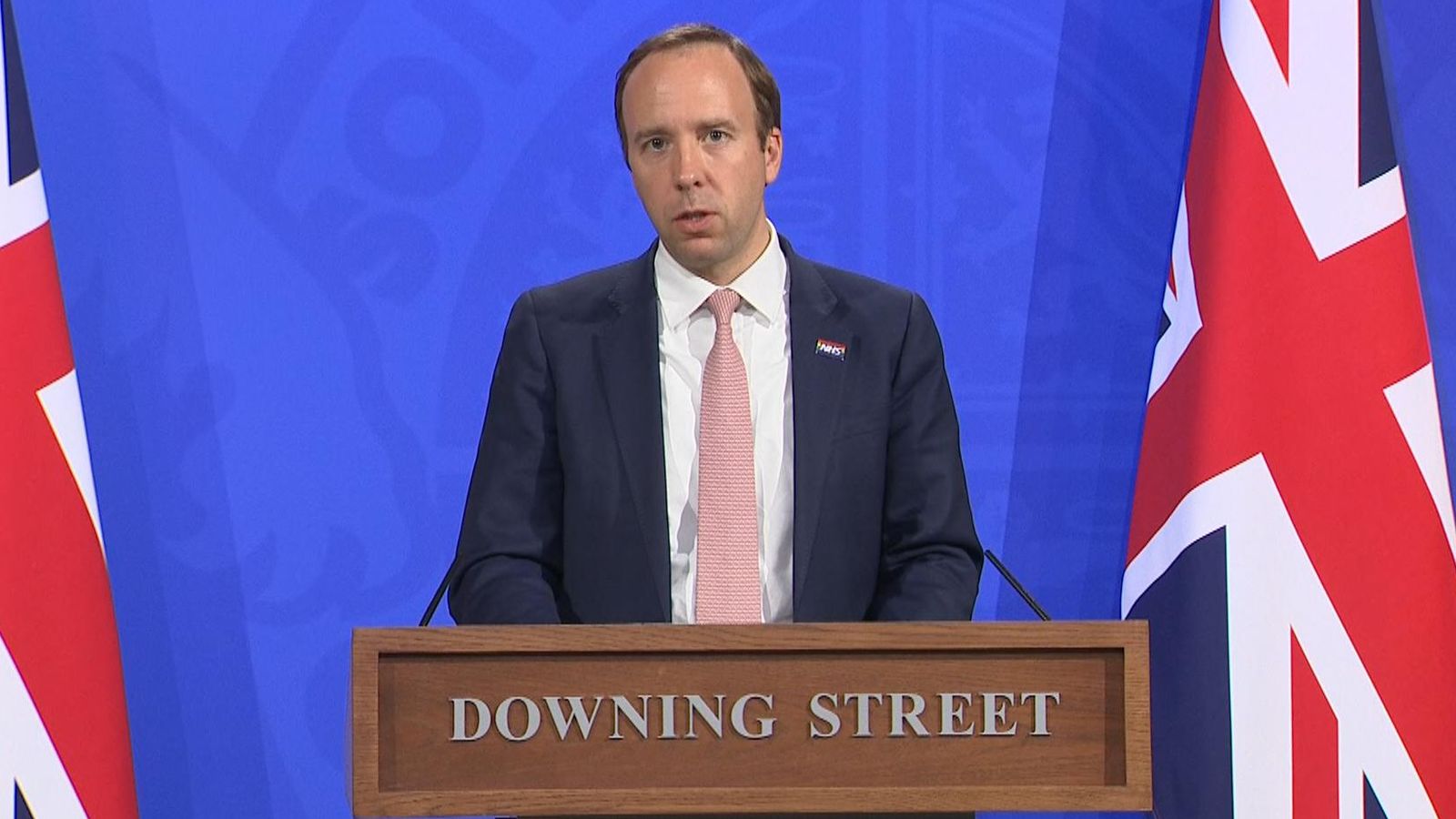To anyone interested in the political handling of the pandemic, Matt Hancock’s WhatsApp messages are explosive.
So far, much of our understanding of decision-making and handling of scientific advice to government has been based on official minutes, committee evidence or rumour.
But are they damning evidence of a minister failing to act on scientific advice? Or are they, in the words of the former health secretary today, a minute-by-minute record of “a lot of people working hard to save lives”?
What is not up for debate is that COVID infections in care homes were a leading cause of deaths during the first wave of the pandemic. Between mid-March and mid-June of 2020 nearly 20,000 care home residents died with COVID recorded on their death certificate.
So when, on 14 of April, according to the messages, Sir Chris Whitty, the chief medical officer, called for testing of all people being sent to care homes, it was genuinely urgent.
So why did Mr Hancock decide, as is suggested in the WhatsApp messages, to only test people being admitted to care homes from hospital, not from the wider community?
One important factor would have been testing capacity. By 2022, test and trace were processing nearly four million COVID tests a week.
But on 14 April 2020 it was fewer than 75,000. While the first walk-through testing centres were being opened, a system for mass community testing was only just being established.
Read more:
How were the WhatsApps leaked?
Five key exchanges
Hancock under increasing pressure – follow latest
Surely it was sensible to focus limited testing resources where they might have the greatest benefit and testing just those being discharged from hospitals into care homes?
It could explain Matt Hancock’s response on WhatsApp: “I do not think the community commitment adds anything and it muddies the waters.”
Even though testing capacity was limited at the time, those involved believe it was growing fast enough to offer call for testing of anyone being sent into a care home.
“Testing capacity was growing massively,” says Professor Alan McNally, the scientist who was tasked with setting up the first of the government’s Lighthouse Labs in Milton Keynes.
It had started testing on 26 March. By the 8 of April, says Prof McNally, his lab was carrying out around two thousand tests a day. But by the end of April, they were fully automated and doing 40-50 thousand tests a day.
It’s clear from his messages is that Mr Hancock was determined to be seen to have met his self-imposed target of 100,000 COVID tests a day, which he made on 2 April 2020.
By the 14th, when the “muddies the waters” message was sent, the pressure was certainly mounting.
But at the time, auditing firm Deloitte, which had been contracted by the government to oversee testing, was counting any processed COVID test toward the 100,000 target. That included tests from any source, whether hospital, community test or lighthouse lab.
One suggestion is that because community tests take slightly longer to process, diverting testing into the community as opposed to new walk-through centres or hospitals might have delayed hitting the 100,000 target.
Speculation aside, a lack of clear policy dogged the testing programme: “We created something incredible in terms of what we could do with testing, but we never had a policy for the most effective use of that capacity,” Prof McNally says.
More revelations to come
Given the vast cache of WhatsApp chat obtained by the Telegraph – 100,000 messages they claim – there will be plenty more revelations to come. It could be a challenging few weeks ahead for Mr Hancock.
At a preliminary hearing today, Hugo Keith KC, Lead Counsel to the inquiry explained that legally binding “Rule 9” requests had been sent to an exhaustive list of witnesses, including the prime minister, ministers, civil servants and science advisors.
“These documents include, and are not limited to, informal group communications such as text messages and WhatsApp group messages, private messages and emails or contemporaneous diary entries or notes,” he said.
The inquiry chair Baroness Hallett hit back at allegations that the inquiry would last “for decades”, saying: “I am determined the inquiry will reach conclusions and make recommendations as soon as possible.”

